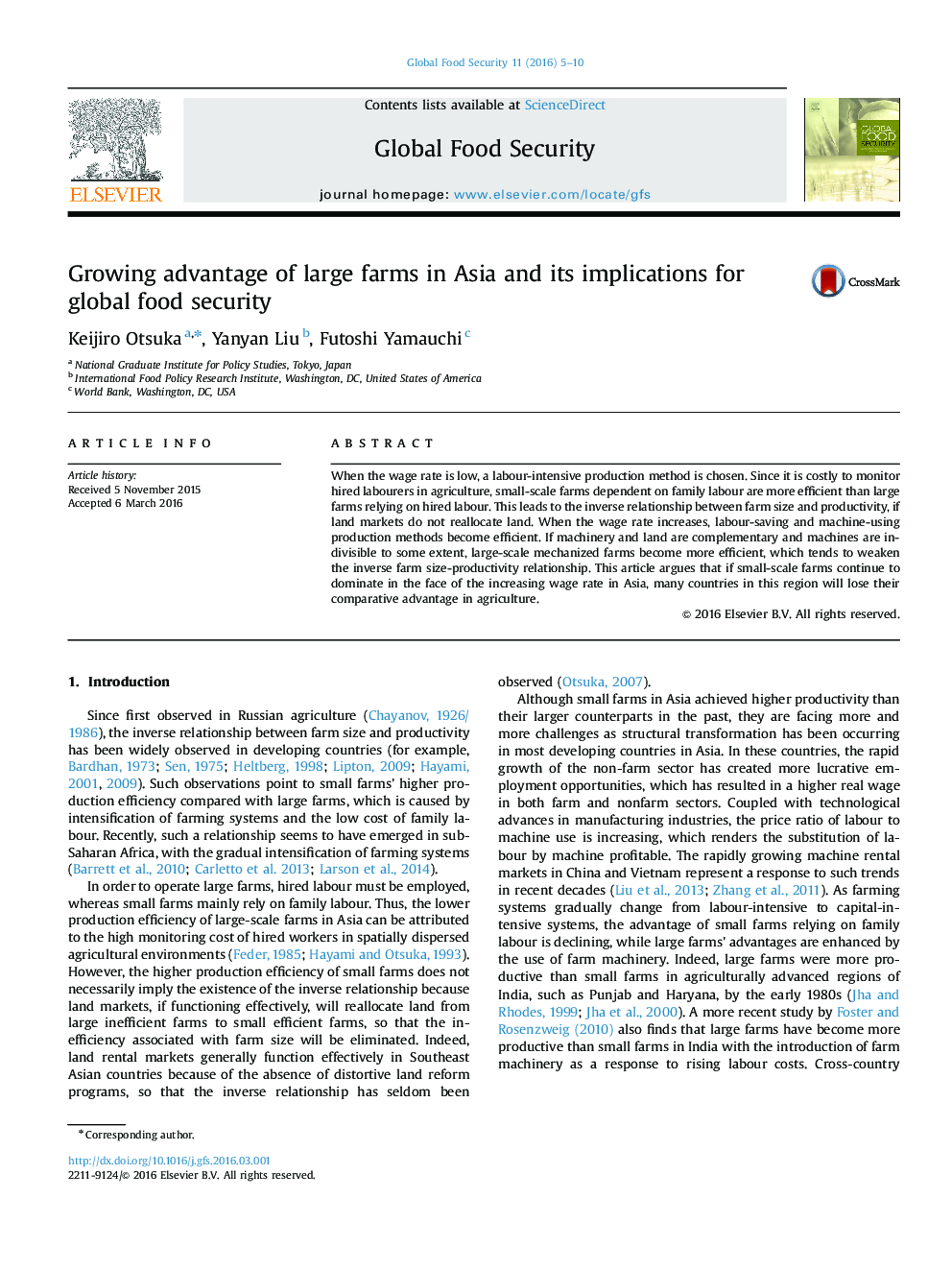| Article ID | Journal | Published Year | Pages | File Type |
|---|---|---|---|---|
| 5114555 | Global Food Security | 2016 | 6 Pages |
â¢Farm size in Asia is not only small but also declining.â¢Production methods on small farms are inherently labour intensive.â¢Rising wages in many Asian countries mean large mechanized farms are more efficient.â¢If current trend continues, Asia may become a major importer of food grains.
When the wage rate is low, a labour-intensive production method is chosen. Since it is costly to monitor hired labourers in agriculture, small-scale farms dependent on family labour are more efficient than large farms relying on hired labour. This leads to the inverse relationship between farm size and productivity, if land markets do not reallocate land. When the wage rate increases, labour-saving and machine-using production methods become efficient. If machinery and land are complementary and machines are indivisible to some extent, large-scale mechanized farms become more efficient, which tends to weaken the inverse farm size-productivity relationship. This article argues that if small-scale farms continue to dominate in the face of the increasing wage rate in Asia, many countries in this region will lose their comparative advantage in agriculture.
